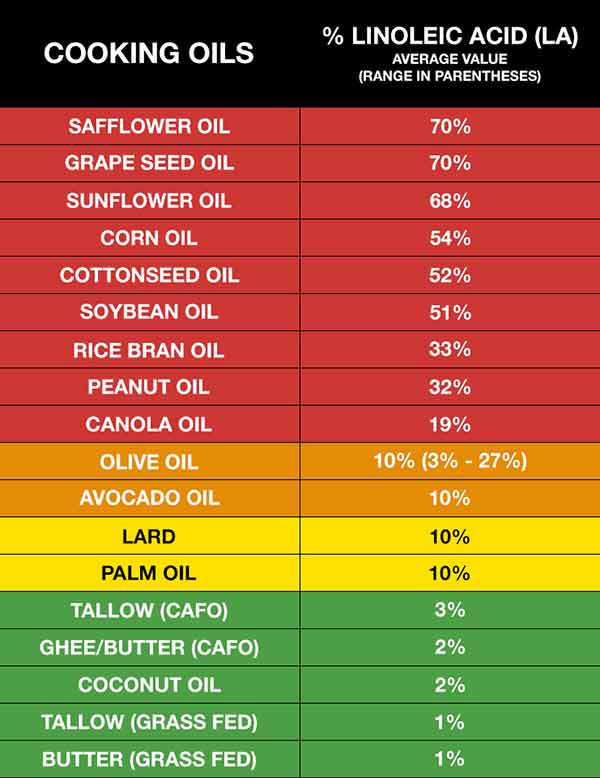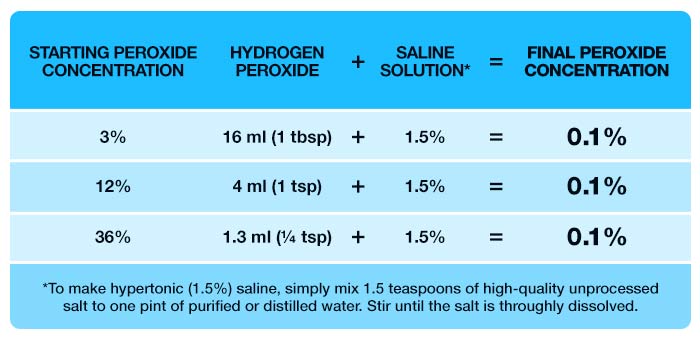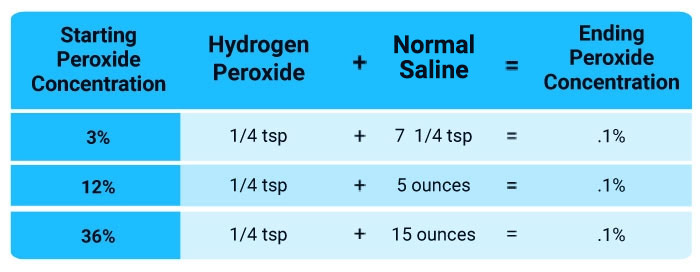Analysis by Dr. Joseph Mercola
April 20,2024
STORY AT-A-GLANCE
- Adrenal fatigue describes a collection of symptoms such as body aches, fatigue, nervousness, sleep disturbances and digestive problems
- The theory is that chronic stress can overtax the adrenal glands, resulting in their functional decline and an inability to produce adequate hormones
- It’s long been assumed that if you have low cortisol, you’re suffering from “adrenal fatigue,” but we now know that this is not an accurate concept
- When adrenal function changes, what’s really going on has to do with the signaling between your brain and your adrenal gland in response to stress — not to adrenal gland function alone
- HPA axis dysfunction, which can be identified using the DUTCH test, may better describe where symptoms come from after prolonged exposure to stress
Adrenal fatigue describes a collection of symptoms such as body aches, fatigue, nervousness, sleep disturbances and digestive problems. The concept is based on the idea that your adrenal glands, which are small glands located on top of each kidney that produce hormones like cortisol, can become overworked.
The theory is that chronic stress can overtax the adrenal glands, resulting in their functional decline and an inability to produce adequate hormones necessary for optimal function. In other words, adrenal fatigue is the idea that your adrenal output of cortisol can become insufficient from long-term stress.
It’s important to note, however, that some experts do not believe adrenal fatigue is an actual medical syndrome.1 While the symptoms often attributed to adrenal fatigue are very real, their underlying causes may be something else entirely.
Adrenal Glands 101
Your adrenal glands are two triangular-shaped endocrine glands located atop each kidney. They produce over 50 hormones, such as cortisol, aldosterone and adrenaline. Like thyroid hormones, adrenal hormones are crucial for your metabolism.
Adrenal hormones primarily regulate your physical and mental stress responses and influence your metabolism, mood, immune function and blood pressure, but testing their function is complex.
As noted by Dr. Michael Greger in the NutritionFacts.org video above, “Saliva tests for adrenal hormone levels are not reliable, with studies showing so-called ‘adrenal fatigue’ patients having higher levels than controls, similar levels or lower levels, ‘an almost systematic finding of conflicting results.’”2
Further, although blood tests can assess many bodily systems, they do not provide a clear picture of adrenal function. Cortisol is frequently tested using blood, but what’s being measured is your total cortisol, which includes both free and bound cortisol.
Since most cortisol in your body is bound to proteins and inactive, “high cortisol” levels in blood tests may not be informative. Free cortisol, which is biologically active, is what’s important. One of the most effective tests for this is the Dried Urine Test for Comprehensive Hormones, or DUTCH test, performed multiple times over a 24-hour period.
Cortisol levels can vary significantly throughout the day, typically peaking in the morning and decreasing by evening, which is referred to as the diurnal rhythm. A single measurement like a blood draw cannot reveal if your diurnal pattern is dysfunctional. By taking multiple samples throughout the day, you can get a more accurate measure of your cortisol pattern.
Further, the DUTCH test evaluates levels of free cortisol, cortisone and their metabolites, alpha-tetrahydrocortisol (a-THF), beta-tetrahydrocortisol (b-THS), and tetrahydrocortisone (THE). These metabolites are important for assessing adrenal output and can help you understand what the underlying pathology is. While saliva tests allow you to check free cortisol, they still won’t show you the metabolites of cortisol. DUTCH, on the other hand, shows both.
Adrenal Insufficiency Versus Adrenal Fatigue
It’s long been assumed that if you have low cortisol, you’re suffering from “adrenal fatigue,” but we now know that this is not an accurate term or concept. When adrenal function changes, what’s really going on has to do with the signaling between your brain and your adrenal gland in response to stress — not to adrenal gland function alone.
Addison’s disease, or adrenal insufficiency, however, is a medical condition that occurs when your body doesn’t make enough cortisol. “The only situation in which low cortisol becomes problematic is probably Addison’s disease, which is adrenal failure. And that’s very rare,” says Georgi Dinkov, an expert on the work of the late Ray Peat, Ph.D., an author and pioneer in nutrition, bioenergetic medicine, environmental factors and regenerative processes.
“If you have adrenal failure, unless you take cortisol shots you will die from hypoglycemia or Addison’s disease. So, it’s lethal,” Dinkov notes. Many doctors use an ACTH (adrenocorticotropic hormone) test to check for problems with your adrenal glands. However, the ACTH test only recognizes extreme underproduction or overproduction of hormone levels. Greger explains:3
“There is an actual disease of adrenal insufficiency known as Addison’s disease, which is diagnosed with an ACTH stimulation test. You inject people with adrenocorticotropic hormone, the signal your brain uses to get your adrenal glands to pump out the stress hormone cortisol, and if your adrenals don’t respond, that shows your adrenal glands must be in trouble.
But inject those presumed to be suffering from chronic stress and fatigue with ACTH, and sometimes you even get a greater rise in cortisol, disproving the notion that stress causes the adrenals to ‘burn out.’”

Save This Article for Later – Get the PDF Now
Adrenal Fatigue Is Rare
Even if your free cortisol is low, adrenal fatigue is rarely the cause, according to Dr. Peter Attia. In reality, cortisol production is often normal, but the cortisol is either a) being degraded, b) too much of it is being converted into inactive cortisone, or c) instead of converting back to cortisol, the cortisone is metabolized into THE.
Enzymes called reductases regulate the conversion of cortisol and cortisone into their respective metabolites. Inflammation, obesity and other factors associated with poor health accelerate these conversions.
So, if you’re feeling lousy and have no energy but your cortisol and cortisone metabolites indicate that production of these hormones is normal, then you need to address the underlying factors, i.e., the obesity, insulin and leptin resistance, and inflammation.
Corticosteroids are often prescribed to people with adrenal fatigue — and it may make you feel better temporarily — but the boost they provide isn’t a sign that you needed more cortisol, and exposes you to another set of health risks. Greger said:4
“But wait, you were diagnosed with ‘AF,’ [adrenal fatigue] given corticosteroids, and now you feel great, so it must have been real. That’s the thing about corticosteroids, though. One of the side effects is a euphoric sense of well-being. The problem is that even low doses can increase the risk of osteoporosis, psychiatric and metabolic disorders, muscle damage, glaucoma, sleep disturbances, and cardiovascular diseases.”
Understanding HPA Axis Dysfunction
While both primary and secondary adrenal insufficiency can be diagnosed with a lab test, more subtle abnormalities in the hypothalamus-pituitary-axis (HPA) are more difficult to diagnose, as there’s no accepted medical test for it. The HPA axis is the primary stress response system. As described in the Journal of Undergraduate Neuroscience Education:5
“It [the HPA axis] is the neuroendocrine link between perceived stress and physiological reactions to stress. The primary function of the activated HPA axis is to release glucocorticoids that activate short-term physiological responses to stress.
While some stress is necessary for salubrious development and aging, when an individual exists in a chronic state of stress their ability to cope is compromised by dysregulation of HPA-axis and other peripheral physiological functions.”
To better describe where symptoms come from after prolonged exposure to stress, it’s important to look at the bigger picture of HPA axis dysfunction. This is the more accurate term describing what is happening here. According to Mark Newman, the founder of Precision Analytical Laboratory in Oregon, makers of the DUTCH test:6
“If a patient has low cortisol, we see many providers label that as ‘adrenal fatigue’ and work to try to increase cortisol. What we find when we look at the metabolites of cortisol in these patients (which is a better marker for overall cortisol production), is that about half of the patients with low free cortisol are making more than average amounts of cortisol.
They may be processing it more quickly. As in obesity, you get these huge productions of cortisol (metabolites), but when you only focus on the free cortisol, you can call someone ‘stage 3 adrenal fatigue’ who is literally making more cortisol than 90%, 95%, or 99% of the population in some situations (because obesity results in more cortisol production, but not more free cortisol). So it’s a more complex situation than that.”
Evaluation of free hormone plus metabolites gives a more complete picture and can prevent practitioners from misunderstanding what is wrong with a patient. As mentioned, the ACTH test only recognizes extremes, as shown by the top and bottom 2% of a bell curve.
This means your adrenal cortisol production could be functioning 20% below the mean, and your body experiencing symptoms of HPA dysfunction, yet the test will not recognize it. To identify HPA dysfunction, a comprehensive hormone panel like the DUTCH test is recommended.
Your Adrenals Work in Tandem With Your Thyroid
Thyroid function is another variable in cases of “adrenal fatigue,” as dysfunction in one can affect the other. For example, if you have low thyroid function and your adrenals aren’t producing enough cortisol, it can worsen your symptoms. Since both are involved in metabolism, dysfunction in either your thyroid or adrenals can also produce very similar symptoms, such as fatigue, memory impairment and low mood.
Dr. Jinaan Jawad, a specialist in chiropractic and functional medicine, describes your adrenals as the “battery backup” for your thyroid. If your adrenals are overtaxed, your thyroid function will suffer.7 If you’re hypothyroid and on hormone replacement therapy, yet still experience symptoms of low thyroid function, you could be shutting down too much cortisol. To address this, Jawad recommends avoiding adrenal stimulators, such as:
| Coffee, soda, energy drinks and other caffeinated and/or stimulating beverages | Refined sugars, high fructose corn syrup and artificial sweeteners |
| Nicotine | Alcohol |
| Any food you have an allergy or sensitivity to (example: dairy, wheat, corn, gluten or shellfish), as these foods will cause a release of histamine and inflammatory chemicals that active your fight-or-flight response | Seed oils (partially hydrogenated fats high in omega-6 linoleic acid) and any food made with them, which includes most processed and fast food.Examples include cottonseed oil, corn oil and canola oil. All of these oils inhibit adrenal hormone synthesis |
| Excessive exercise, as this keeps your body locked in fight-or-flight response |
Five Natural Herbs to Support Your Adrenal Health
If chronic stress is taxing your body, adaptogenic herbs can help your body become more resilient to stress. They work, in part, via hormone regulation and immune function support. Five adaptogenic herbs for adrenal support include the following:
1.Ashwagandha, which helps your body adapt to stress by balancing your immune system, metabolism and hormonal systems. The root contains the highest concentration of active ingredients that modulate hormones, including thyroid hormone, estrogen, progesterone and testosterone.
2.Rhodiola, which has been shown to be particularly beneficial for your nervous system. It has antidepressant and anti-anxiety benefits, and may help reduce symptoms of burnout associated with work stress. Its energy and vitality-boosting effects can have clear benefits for those struggling with chronic fatigue. As an added boon, it tends to be fast-acting.
3.Asian (Panax) ginseng — Like ashwagandha, Asian ginseng impacts thyroid hormones. More specifically, it contains properties that block production of excessive amounts of rT3. A study looking at the impact of ginseng injections found it produced healthy increases of T3 and T4 and a reduction in rT3.8
4.Siberian ginseng (Eleutherococcus senticosus) — Its active components are called eleutherosides, which are thought to stimulate your immune system. Like Asian ginseng, Siberian ginseng is an adaptogen that’s traditionally been used to increase energy, stimulate the immune system and increase longevity.
It also has mild antidepressive effects and is useful for insomnia, behavioral and memory problems, and has been shown to improve exercise endurance by improving oxygen utilization in your body.
5.Tulsi — Highly revered in India for over 5,000 years, tulsi, also known as holy basil, has been valued for its many health-promoting properties. This herb is said to purify the mind, body and spirit, and has been cherished for its protective and uplifting nature.
Tulsi tea is an antioxidant-rich beverage with a complex and unique chemistry. It contains hundreds of beneficial phytochemicals. Working together, these compounds have adaptogenic and immune-enhancing properties that combat stress, bolster your immune system and promote healthy metabolism, including helping your body maintain an optimal level of blood sugar.
Sources and References
- 1 BMC Endocr Disord. 2016; 16(1): 48
- 2 NutritionFacts.org March 27, 2024, 1:14
- 3 NutritionFacts.org March 27, 2024, 1:30
- 4 NutritionFacts.org March 27, 2024, 2:06
- 5 J Undergrad Neurosci Educ. 2018 Spring; 16(2): R59–R60
- 6 Youtube, Dr. Mercola Interviews Mark Newman 2016
- 7 YouTube, How Are the Adrenal Glands and The Thyroid Connected
- 8 Chinese Journal of Integrated Traditional and Western Medicine January 2000; 6: 29-31
source https://articles.mercola.com/sites/articles/archive/2024/04/20/adrenal-fatigue.aspx








